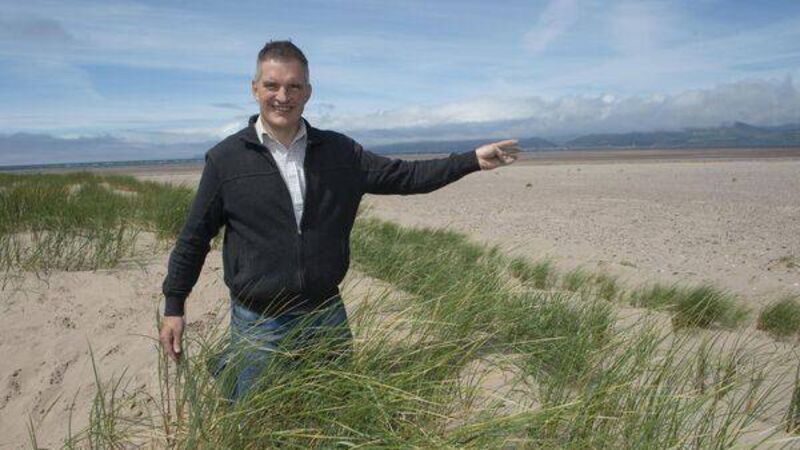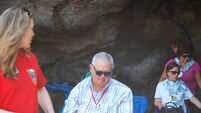Coastal erosion: Managing the Irish coastline

Jimmy Murphy (Funded Investigator in MaREI, the SFI Research Centre for Energy, Climate and Marine coordinated by the Environmental Research Institute (ERI) at University College Cork).
IRELAND’S Wild Atlantic way is framed about our rugged coastline that not only is incredibly varied and scenic, but also is resilient to the many storms that track across the country.
While we acknowledge the beauty of the coastline, we do not often appreciate or understand its vulnerability and sensitivity to different meteorological events and climate change effects.
Generally, climate change is most associated with heavy rainfall and flooding along with higher temperatures, but impacts on the coastline relate to sea level rise and potential changes in storm frequency and intensity.
Sea level rise rates have been accelerating with an average currently at 3.7mm/yr and the mean sea level is now 0.2m higher than at the start of the 20th century (Chapter 9: Ocean, Cryosphere and Sea Level Change | Climate Change 2021: The Physical Science Basis (ipcc.ch)).
Higher water levels result in larger waves reaching the coastline particularly during storm events and this increases the likelihood of erosion of soft coastlines.
Storms have always impacted the coastline and their effects can vary significantly depending on their timing and where they make landfall. For instance, if a storm makes landfall on a primarily rocky section of coastline during low tide, the impact will be less than a storm acting on a soft sandy coastline at high tide.
Climate change impacts on storm characteristics have been reported but it requires long term data and analysis to distinguish between natural variability and climate change effects. In any case our coastline has in the past and will continue in the future to be vulnerable to storms whose effects will now be exacerbated by sea level rise. This vulnerability needs to be better understood in order to be able to properly manage and protect sensitive coastlines and locations where important infrastructure or properties are at risk.
Protecting our coastline normally involves an engineering approach through the construction of structures such as revetments, groynes, detached breakwaters or by pumping sand onto the beach as part of a nourishment scheme. In some cases, a more natural/softer approach can be adopted by undertaking dune restoration through use of sand fencing, marram grass planting or creating exclusion areas. It is these softer approaches that local communities can contribute to and support and groups such as the Inchydoney Dunes Conservation Group in Clonakilty are important, particularly in monitoring the beach and dunes and highlighting any issues arising. For instance, degradation of sand dunes through overactivity can negatively impact the beach but this can be easily remedied by relatively minor measures at a local level.
In Ireland, the local authorities have primary responsibility for the coastline and must prioritise locations needing protection and then apply to the Office of Public Works (OPW) for the necessary funding. To date on a national basis there has been no consistency in terms of how coastal protection schemes have been prioritised between local authorities.
The general approach tends to be reactive to the damage caused by storms rather than being proactive in trying to identify the most vulnerable locations and provide protection in advance.
This is the reason why a study currently being carried out by the MaREI Centre in University College Cork and funded by Cork County Council is groundbreaking for Ireland. Cork County Council intend to manage the circa 1200km of Cork coastline on a more informed basis as well as identify beaches with the highest vulnerability such that to prioritise for protection. The study involves the collection and analysis of data to understand the behaviour of the coastline such that if coastal protection is required a solution best suited to that site can be provided. In addition, the project has developed an innovative automated analysis technique of aerial photographs such that to determine the position of the vegetation line (usually the edge of a cliff or sand dune) at various time intervals between 2000 – 2023. This shows the change in coastal position over time and maybe surprisingly it was found that not all beaches in Cork are eroding or eroding rapidly and some are actually accreting. It also has shown some more longer term behavioural aspects of beaches and dunes with times of both recession and growth.
The study is highlighting the complex nature of the Cork coastline and the fact no two beaches behave in exactly the same manner due to differences in beach location and orientation, wave conditions, tidal range, local currents, sediment characteristics and quantity and also whether any coastal protection measure is already in place.
The data gathering and modelling will also enable predictions of the future coastline position to be made and will estimate if/when properties, roads, etc, will be at risk.
This study makes use of the modern capacity to more easily collect and analyse large amounts of data and will provide a template for other local authorities to follow such that nationally we can properly manage our coastline for the uncertain challenges ahead.
Jimmy Murphy is Funded Investigator in MaREI, the SFI Research Centre for Energy, Climate and Marine,coordinated by the Environmental Research Institute (ERI) at University College Cork.







 App?
App?







